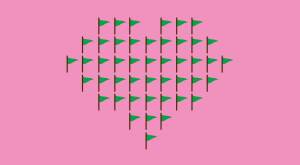A TikTok video went viral last year when a mom told her son what she would not do or tolerate during the new school year. On her list was rushing in the morning to help her unprepared teen catch the bus, re-buying lost school supplies and helping with projects the night before they were due. She refers to her list as “What We Not Gonna Do.” While the video was funny — and relatable — what this wise woman was doing was protecting her energy and sanity by determining things she was unwilling to do. And she was spot on.
We’re all familiar with the concept of the to-do list. We record our responsibilities and spend the day (week or month) trying to check them all off. To-do lists are a helpful organization and productivity tool. They help us see what’s on our plate, prioritize duties and reduce the number of forgotten tasks.
But like the mom in the video discovered, there’s value and peace in identifying the things we won’t do. And that’s why a “to-don’t” list can be as helpful as a to-do list.
What’s a “to-don’t” list?
A to-don’t list is a list of tasks you want to stop doing. These things drain you emotionally, mentally or physically, take your attention away from priority tasks and leave you unfulfilled.
They might be tasks you dread doing or ones you feel you should do — you know, because you’re a good person, neighbor, boss, employee, wife, mother, daughter, sister, friend, etc. They might even be things that need to be done — like cooking or laundry. They can be small things that impact your daily productivity, like checking social media too often, or big things that affect you emotionally, like lending money to family and friends.
Creating a to-don’t list helps you identify and limit the responsibilities or habits that stress you out and steal your energy. A to-don’t list can complement your to-do list by ensuring the things on it fulfill and energize you and provide value.
How to create a to-don’t list
The first step to crafting your to-don’t list is identifying the tasks you want to reduce or stop doing. You might immediately think of some things; if you can’t, try keeping a daily log of your duties for the next week. At the end of each day, identify the items that fulfill you and give you energy and those that don’t. Another approach is to review your to-do lists for the past two weeks to identify your energy-draining tasks.
Start small to increase your chances of success; identify the top three to five things you want to let go of. Once you have your list, you’ll need to decide if each item is something you can stop completely, reduce or delegate — and then create the necessary plan.
For example, let’s say you want to stop lending money to relatives. You might decide to stop immediately, which means calling your brother to let him know his personal bank is closing. Or if you want to stop checking your email 57 times a day, you might decide twice a day is okay, so you turn off your email notifications and put two email-checking time blocks on your calendar. If you’re giving up a need-to-be-done-but-not-necessarily-by-me item, like laundry, you may need to hold a family meeting to discuss which lucky person will inherit the task or if you can fit laundry service in the budget.
Implementing your to-don’t list
Make sure you write down your to-don’t list and protect it the same way you guard your to-do list. Your to-don’t list represents boundaries, so be firm with it and share your list with others as needed, especially if they’ve come to expect specific tasks from you.
That said, give yourself (and others) grace as you move forward with your to-don’t list. Depending on what’s on it, you might be shifting long-term habits, creating new ones or reducing other’s dependency on you. But the results of implementing a to-don’t list will be worth your efforts. By reducing the things that drain you, you’ll have more time, energy and resources to do the things you want to do. Your to-do list will be shorter and more fulfilling, and maybe, just maybe, you’ll be able to check everything off it.











